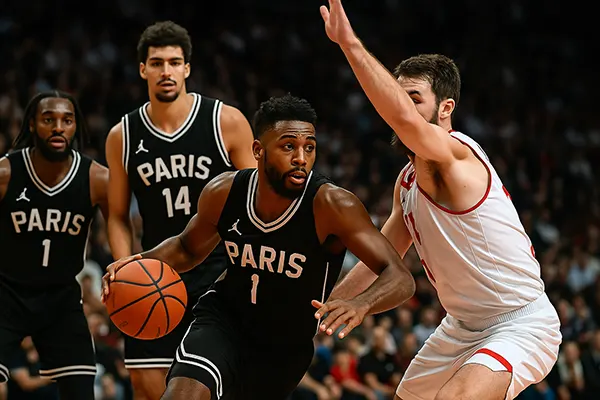Bankroll Percentage Strategy in Sports Betting: A Comprehensive Guide

Managing your bankroll effectively is one of the most crucial aspects of successful sports betting. Many players overlook this fundamental principle, leading to significant losses over time. One of the most popular and widely used bankroll management strategies is the “bankroll percentage” approach. This method allows bettors to control their risks and maximise long-term profitability while minimising the chance of going broke.
In this article, we will delve into the details of the bankroll percentage strategy, exploring how it works, its advantages and drawbacks, and how to determine the ideal percentage to wager. Whether you are a seasoned bettor or new to the world of online sports betting, understanding this strategy can significantly enhance your chances of sustained success.
How the Bankroll Percentage Strategy Works
The bankroll percentage strategy is based on the principle of staking a fixed percentage of your total bankroll on each bet rather than a fixed monetary amount. This percentage typically ranges from 1% to 5%, depending on the bettor’s risk tolerance and overall strategy. The primary goal is to protect the bankroll while allowing gradual growth over time.
For example, if a bettor starts with a bankroll of £1,000 and decides to bet 3% per wager, their first bet would be £30. If they win, their bankroll increases, and their next bet would be a slightly higher amount based on the updated bankroll. Conversely, if they lose, the next bet amount decreases, ensuring that losses are kept under control.
Unlike flat betting, where a fixed amount is wagered each time, the bankroll percentage strategy adjusts to winning and losing streaks. This dynamic approach allows bettors to stay in the game longer and reduces the risk of going bust during inevitable downswings.
Advantages and Disadvantages of the Strategy
One of the biggest advantages of using the bankroll percentage strategy is that it promotes disciplined betting and prevents reckless gambling. Since the stake size is always proportional to the bankroll, it naturally enforces responsible wagering and risk management. Moreover, this method ensures that players never deplete their entire bankroll in a short period.
However, the strategy also has its downsides. Since bet sizes fluctuate based on the bankroll, it can take longer to recover from losses compared to a more aggressive staking plan. Additionally, for players with smaller bankrolls, the potential winnings may feel insignificant in the early stages. Despite these drawbacks, the bankroll percentage strategy remains one of the most effective and sustainable approaches in sports betting.
How to Choose the Optimal Bankroll Percentage?
Choosing the right percentage to stake depends on several factors, including risk tolerance, betting style, and overall goals. Conservative bettors who prefer lower risk often stick to 1%-2% per bet, ensuring slow but steady growth with minimal fluctuations. On the other hand, more aggressive bettors may opt for 3%-5%, accepting greater risk in pursuit of higher returns.
A key factor in determining the ideal percentage is understanding your edge over the sportsbook. If you have a solid betting strategy and consistent positive returns, you might justify a higher percentage. However, for those who are still learning or have an inconsistent betting history, a lower percentage is recommended to preserve the bankroll over the long run.

Tips for Effective Bankroll Management
Implementing the bankroll percentage strategy effectively requires discipline and patience. Here are some key tips to enhance your bankroll management:
1. Set Clear Betting Limits: Before placing any bets, decide on a fixed percentage that aligns with your risk tolerance. Avoid adjusting the percentage impulsively based on emotions.
2. Use Reliable Betting Platforms: Choose a reputable sports betting platform such as Quigioco or download the Quigioco app to access safe and secure betting opportunities.
3. Track Your Bets: Keep a detailed record of all your bets, including stake size, odds, outcomes, and bankroll balance. Analysing past bets can help refine your strategy over time.
By following these principles, bettors can improve their chances of long-term profitability while reducing unnecessary risks. The bankroll percentage strategy is an essential tool for responsible gambling, ensuring that players stay in control and make informed betting decisions.
Examples of Bet Calculations Using the Bankroll Percentage Strategy
To illustrate how this strategy works in practice, let’s consider a bettor with a £2,000 bankroll and a staking plan of 3% per bet.
– First bet: 3% of £2,000 = £60 – If they win and the new bankroll becomes £2,100, the next bet is 3% of £2,100 = £63 – If they lose and the new bankroll drops to £1,940, the next bet is 3% of £1,940 = £58.20
As shown in the example, the stake size adjusts dynamically based on the bankroll. This approach ensures that during a winning streak, the bettor gradually increases their stake, maximising profits. Conversely, during a losing streak, bet sizes shrink to protect the remaining bankroll.



